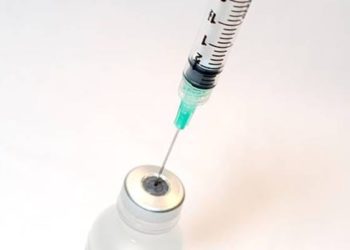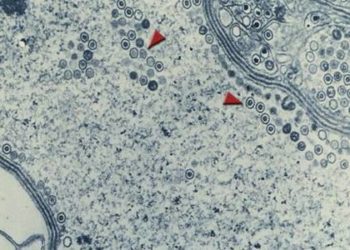LSD1 inhibition reduces herpesvirus infection and recurrence in animals [PreClinical]
1. Pharmaceutical inhibition of lysine-specific demethylase 1 (LSD1) reduced primary infection of herpes simplex virus (HSV), shedding, and reactivation in multiple animal models.
2. Inhibition of LSD1, a required histone demethylase, resulted in lasting epigenetic suppression of the viral genome, which was associated with decreased infection activity.
Evidence Rating Level: 2 (Good)
Study Rundown: HSV, a highly prevalent human pathogen, establishes lifelong latent infections which often manifest into genital or oral lesions, and more rarely into blindness or death in neonates. Current HSV therapeutics target late-stage viral replication, and do not effectively suppress some aspects of the infection including viral shedding, subclinical reactivation, and recurrence. Previous studies have highlighted the potential of epigenetic therapies, which edit virus gene expression, to suppress virus activity.
In the current study, researchers used a pharmaceutical inhibitor of the histone demethylase LSD1, which is required for HSV infection and reactivation. Three separate animal models useful for highlighting particular aspects of viral infection progression were used to mimic primary infection, spontaneous reactivation, viral shedding, and/or recurrent disease. When compared with no-treatment controls, suppression of LSD1 with the drug tranylcypromine (TCP) reduced primary acute infection in a mouse model, blocked viral reactivation and shedding in a rabbit eye model, and reduced recurrent disease in a guinea pig model. TCP-treatment of animals caused a shift in gene expression toward a more suppressive profile. Combination of TCP with a traditional therapy, Acyclovir (ACV), increased survival and reduced recurrent disease more effectively than individual treatments.
This study provides exciting evidence that epigenetic therapies may improve treatment of virus infection, particularly when paired with current, mechanistically-distinct therapies. The drug used in this study, TCP, is well characterized and approved for some uses in the United States (though at a lower relative dose than used in this study).
Click to read the study in Science Translational Medicine
Relevant Reading: Targeting the JMJD2 histone demethylases to epigenetically control herpesvirus infection and reactivation from latency
In-Depth [animal study]: In this study, multiple animal models were employed to investigate monoamine oxidase inhibitors as suppressors of HSV primary infection, viral shedding, and reactivation. In a mouse model of primary HSV infection, topical treatment with TCP after HSV-1 infection increased survival and reduced viral loads in sensory ganglia compared to vehicle control (VC). Alternative drug delivery routes provided similar results. At a dose of HSV-2 that caused lethality in 90% of untreated animals, TCP oral treatment (6mg/kg) increased survival and reduced gaglia viral loads vs. VC. A combination treatment of ACV (6 mg/kg) and TCP (5-15mg/kg) enhanced survival to 60% as compared to 40% with ACV alone. A 28-day ocular infection in rabbits established viral latency and was followed with treatments of TCP, Valtrex (VCV), or VC. Eye swabs from TCP-treated animals had no infectious virus and only 3.3% contained detectable viral DNA. These results were compared with eye swabs from VCV-treated animals (7.1% infectious virus; 17.1% viral DNA), and vehicle-treated animals (24.7% infectious virus; 36.6% viral DNA). In a model of a HSV genital lesions and viral shedding, guinea pigs intravaginally infected with HSV-2 were treated orally with TCP. TCP treatment resulted in lower numbers of positive vaginal swabs and reduced levels of viral genomes compared to either VC or ACV treatment. Combination of TCP and ACV increased survival and reduced recurrence compared to either treatment alone.
Chromatin immunoprecipitation (ChIP) assays on trigeminal ganglia from HSV-1 infected rabbits and mice revealed an increase in repressive epigenetic marks. ChIP of dorsal root ganglia of guinea pigs also revealed enhanced histone levels and repressive heterochromatic marks on viral immediate/early genes.
More from this author: Tumor-specific mutant antigens are potential targets for cancer therapy [PreClinical], Genetically engineered lymphocytes inhibit Hepatitis C virus replication in vitro [PreClinical], Rapamycin inhibits intestinal tumor formation and growth [PreClinical]
Image: PD
©2014 2 Minute Medicine, Inc. All rights reserved. No works may be reproduced without expressed written consent from 2 Minute Medicine, Inc. No article should be construed as medical advice and is not intended as such by the authors, editors, staff or by 2 Minute Medicine, Inc.







![[CORAL-1 trial] Interferon-free regimen for recurrent hepatitis C after liver transplant safe and effective](https://www.2minutemedicine.com/wp-content/uploads/2014/11/10229_lores-75x75.jpg)